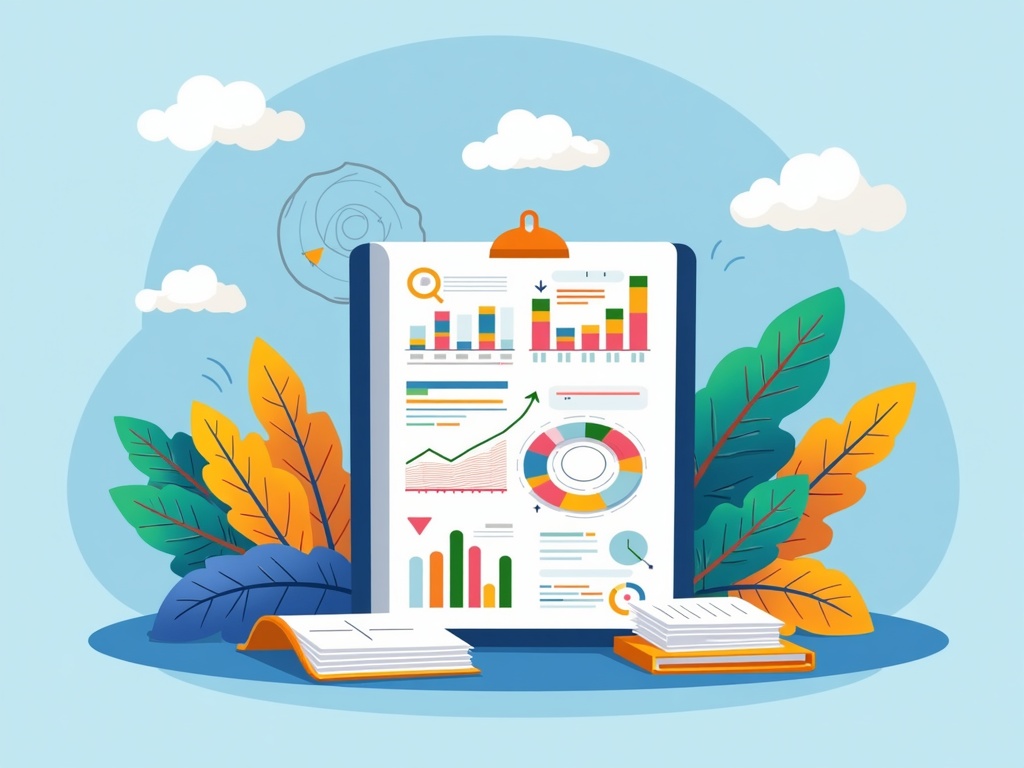From Data Cleaning to Analysis: A Complete Workflow
Imagine diving into a lake, eager to explore its depths, only to find the water murky and filled with debris. That’s often what raw data feels like: a potentially rich source of insights obscured by errors, inconsistencies, and irrelevant information. To truly extract value, you need a clear, systematic approach, a workflow that takes you from the initial mess to actionable analysis. This article outlines that journey, step by step, transforming chaotic data into a crystal-clear picture.
The Necessity of a Robust Workflow
Why can’t we just jump straight into analysis? Think of it like building a house. You wouldn’t start putting up walls before laying a solid foundation, right? Data analysis is the same. Flawed data leads to flawed conclusions, potentially costing you time, money, and credibility. A well-defined workflow ensures:
- Accuracy: Minimizing errors leads to trustworthy results.
- Efficiency: Streamlining the process saves time and resources.
- Reproducibility: Following a consistent method allows others (or yourself in the future) to replicate your findings.
- Actionable Insights: Clean, well-organized data facilitates better decision-making.
Think of a marketing campaign built on inaccurate customer data – wasted ad spend targeting the wrong demographics. Or a medical study drawing incorrect conclusions due to improperly formatted patient records. The stakes are high, making a robust workflow essential.
Phase 1: Data Collection and Initial Assessment
The first phase is all about gathering your raw materials and understanding what you’re working with. This involves:
1. Data Acquisition
Identify your data sources. This could involve extracting data from databases, web scraping, importing CSV files, or even manual data entry. Consider the potential biases or limitations inherent in each source. Are you relying solely on social media sentiment, which might skew younger? Are your sales figures missing data from a particular region?
2. Data Inventory
Create a detailed inventory of the data you’ve collected. Document the source of each dataset, its format, size, and any relevant metadata (e.g., date of creation, update frequency). This data about the data is critical for understanding its context and potential limitations.
3. Preliminary Data Inspection
Take a first look at your data to identify potential issues. Check for missing values, outliers, duplicates, and inconsistencies in formatting. Simple descriptive statistics (mean, median, standard deviation) can reveal unexpected patterns or anomalies. Are there negative values where there shouldn’t be? Are some columns overwhelmingly empty?
Phase 2: Data Cleaning and Preprocessing
This is where you roll up your sleeves and get to the heart of the data. This phase is paramount in developing an effective analytical platform .
1. Handling Missing Values
Missing data is a common problem. You have several options:
- Deletion: Remove rows or columns with missing values. Use this cautiously, as you might lose valuable information. Appropriate when the missing data is a small percentage of the total and doesn’t introduce bias.
- Imputation: Replace missing values with estimated values. Common methods include:
- Mean/Median Imputation: Replace missing values with the average or middle value of the column. Simple but can distort the distribution.
- Mode Imputation: Replace missing values with the most frequent value. Useful for categorical data.
- Regression Imputation: Predict missing values using a regression model based on other variables. More sophisticated but requires careful selection of predictors.
- Multiple Imputation: Create multiple plausible datasets with different imputed values, then combine the results. Accounts for the uncertainty of imputation.
The choice depends on the nature of the data and the extent of missingness. Always document your imputation strategy.
2. Removing Duplicates
Duplicate records can skew your analysis. Identify and remove them, but be careful not to accidentally remove legitimate entries. Consider whether duplicates might represent repeated events or transactions.
3. Correcting Inconsistencies
This involves standardizing data formats, correcting typos, and resolving conflicting entries.
- Data Type Conversion: Ensure columns have the correct data type (e.g., numbers are stored as numbers, dates are stored as dates).
- Standardization: Bring data to a consistent scale. Useful when comparing variables with different units. (e.g., converting all currencies to USD).
- String Manipulation: Clean up text data by removing leading/trailing spaces, converting to lowercase, and correcting misspellings.
4. Outlier Detection and Treatment
Outliers are extreme values that deviate significantly from the rest of the data. They can distort statistical analyses and should be handled carefully.
- Visual Inspection: Use box plots, scatter plots, and histograms to identify potential outliers.
- Statistical Methods: Use techniques like Z-score or IQR (interquartile range) to identify data points that fall outside a defined range.
Treatment options include:
- Removal: Remove outliers if they are clearly errors or represent irrelevant data points.
- Transformation: Apply mathematical transformations (e.g., logarithmic transformation) to reduce the impact of outliers.
- Winsorizing: Replace extreme values with less extreme values (e.g., replace the top 5% of values with the value at the 95th percentile).
Phase 3: Data Transformation and Feature Engineering
Now that your data is clean, it’s time to shape it into a form that’s suitable for analysis.
1. Data Aggregation
Combine data from multiple sources or group data into summary statistics. For example, you might aggregate daily sales data into monthly totals or calculate the average customer spending by region.
2. Data Transformation
Apply mathematical functions to create new variables or modify existing ones.
- Scaling: Standardize or normalize data to a specific range (e.g., 0 to 1). Useful for algorithms that are sensitive to the scale of the data.
- Log Transformation: Reduce skewness and make data more normally distributed.
- Date/Time Extraction: Extract specific components from date/time values (e.g., year, month, day of week).
3. Feature Engineering
Create new features from existing ones to improve the performance of your models or reveal hidden patterns. This is where domain expertise comes into play.
- Interaction Terms: Create new features by combining two or more existing features (e.g., multiplying price and quantity to create a revenue feature).
- Dummy Variables: Convert categorical variables into numerical variables that can be used in statistical models.
- Polynomial Features: Add polynomial terms (e.g., squared or cubed terms) to capture non-linear relationships.
For example, in a customer churn analysis, you might create a feature called customer lifetime value based on their purchase history and engagement level.
Phase 4: Data Analysis and Interpretation
With your data clean, transformed, and feature-engineered, you’re finally ready to dive into the analysis.
1. Exploratory Data Analysis (EDA)
Use visualisations and summary statistics to explore patterns, relationships, and anomalies in the data.
- Histograms: Visualize the distribution of numerical variables.
- Scatter Plots: Examine the relationship between two numerical variables.
- Box Plots: Compare the distribution of a numerical variable across different groups.
- Correlation Matrices: Identify relationships between multiple variables.
EDA helps you formulate hypotheses and guide your subsequent analysis.
2. Statistical Modeling
Apply statistical techniques to test your hypotheses and build predictive models. This might involve:
- Regression Analysis: Predict the value of a dependent variable based on one or more independent variables.
- Classification: Assign data points to predefined categories.
- Clustering: Group data points into clusters based on their similarity.
- Time Series Analysis: Analyze data that is collected over time to identify trends and patterns.
The choice of technique depends on the research question and the nature of the data.
3. Interpretation and Visualization
Translate your findings into meaningful insights and communicate them effectively. Use visualizations to illustrate key patterns and relationships. Avoid technical jargon and focus on the practical implications of your results.
Phase 5: Reporting and Actionable Insights
The final phase is about summarizing your findings and translating them into actionable recommendations.
1. Report Writing
Document your entire workflow, from data collection to analysis and interpretation. Clearly explain your methods, assumptions, and limitations. Include visualizations and tables to support your findings.
2. Presentation
Communicate your results to stakeholders in a clear and concise manner. Tailor your presentation to your audience and focus on the key takeaways.
3. Actionable Insights
Translate your findings into concrete recommendations that can be used to improve business decisions. For example, if you’ve identified a segment of customers who are likely to churn, recommend specific actions to retain them.
Tools and Technologies
Several tools and technologies can support you in the described workflow:
**Programming Languages:Python (with libraries like Pandas, NumPy, Scikit-learn), R
**Data Visualization Tools:Tableau, Power BI, Matplotlib, Seaborn
**Databases:SQL, NoSQL
**ETL Tools:Apache NiFi, Talend
Choosing the right tool depends on your specific needs and technical expertise.
Conclusion
The journey from raw data to actionable insights is paved with careful planning, meticulous cleaning, and insightful analysis. By following a structured workflow, you can transform even the messiest data into a valuable asset. As you become more experienced, you’ll develop your own best practices and refine your workflow to meet the specific challenges of your domain. Remember, every project is an opportunity to learn and improve, turning data into your organization’s most valuable competitive advantage.

